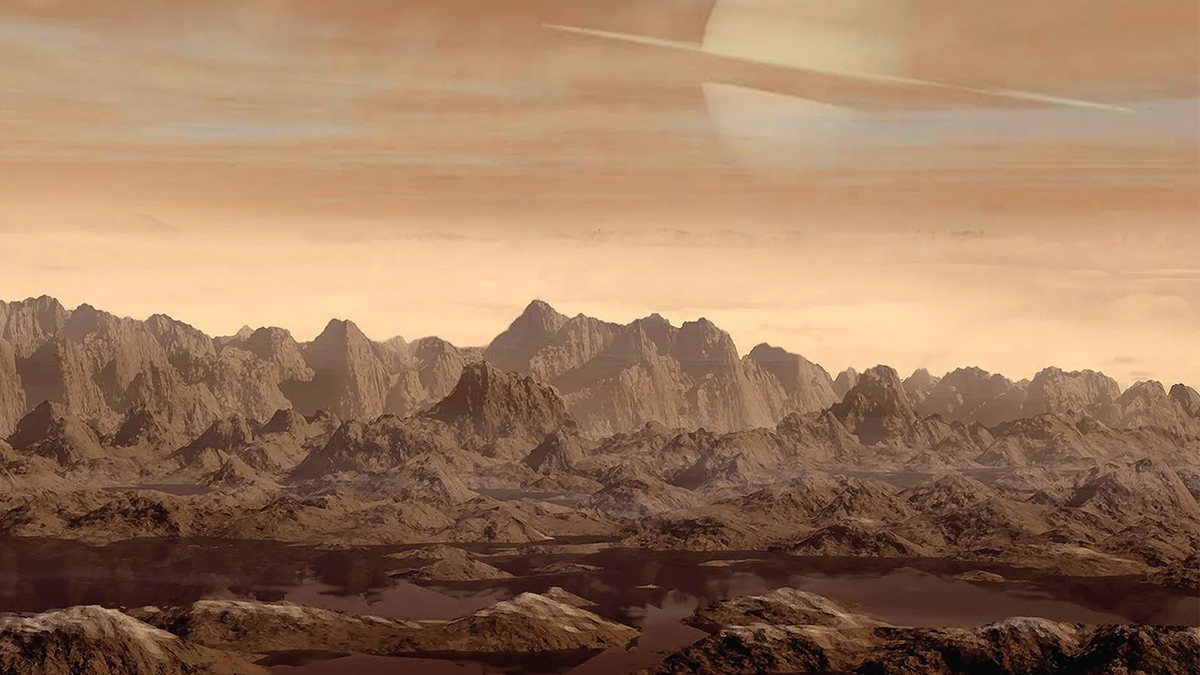In 2006, a NASA spacecraft flew by Saturn’s largest moon and found evidence of large bodies of liquid on the surface of the bizarre world. The shocking discovery meant that Titan’s landscape is eerily similar to that of Earth’s; the two worlds are the only ones known to have rivers, lakes, and seas on the surface.
Teen Titan’s Go! Warner Bros. Animation Crossover For WB100
Titan’s shoreline, however, is not as inviting as ours. Instead of water, the fluid that runs across Titan is an unholy mixture of methane, ethane, and other hydrocarbons. If that doesn’t sound hardcore enough, a new study suggests that waves of the greenhouse gases could be crashing on the moon’s coastlines, shaping its wet landscape.
A team of geologists from the Massachusetts Institute of Technology sought to solve the mystery of Titan’s shorelines, and whether waves eroded the moon’s coasts into their current shape. Using computer models, the researchers simulated the different types of erosion that could have produced the shorelines shown in images captured by the Cassini mission nearly 20 years ago.
“If we could stand at the edge of one of Titan’s seas, we might see waves of liquid methane and ethane lapping on the shore and crashing on the coasts during storms. And they would be capable of eroding the material that the coast is made of,” Taylor Perron, a professor at MIT and co-author of the study, said in an emailed statement. The findings are published in the journal Science Advances.
Scientists have debated the presence of waves on Titan for years, with some arguing that the liquid bodies on the moon are mirror-smooth while others saw rough shores. Instead of looking at the images to investigate whether or not Titan hosts waves, the researchers behind the new study looked at the shape of the shoreline to try and figure out what may have resulted in its erosion.
The researchers simulated a sea with flooded river valleys around its edges and ran it through three scenarios: no coastal erosion, erosion driven by waves, and uniform erosion whereby liquid passively dissolves a coast’s material over time as it gradually sloughs off under its own weight.
“We had the same starting shorelines, and we saw that you get a really different final shape under uniform erosion versus wave erosion,” Perron said. “They all kind of look like the flying spaghetti monster because of the flooded river valleys, but the two types of erosion produce very different endpoints.”
The team mapped the shorelines of each of Titan’s seas using Cassini’s radar images, and applied their modeling to each of the sea’s shorelines. The found that all four seas fit with the wave erosion model as the most likely mechanism to explain their shape. “We can say, based on our results, that if the coastlines of Titan’s seas have eroded, waves are the most likely culprit,” Perron said.
The researchers are now preparing to look into Titan’s winds, examining how strong they must be to stir up waves strong enough to chip away at the moon’s coasts.
“Titan presents this case of a completely untouched system,” Rose Palermo, a former MIT graduate student and research geologist at the U.S. Geological Survey, and lead author of the study, said in the statement. “It could help us learn more fundamental things about how coasts erode without the influence of people, and maybe that can help us better manage our coastlines on Earth in the future.”
More: New Images Show Saturn’s Moon Titan in Incredible Detail
